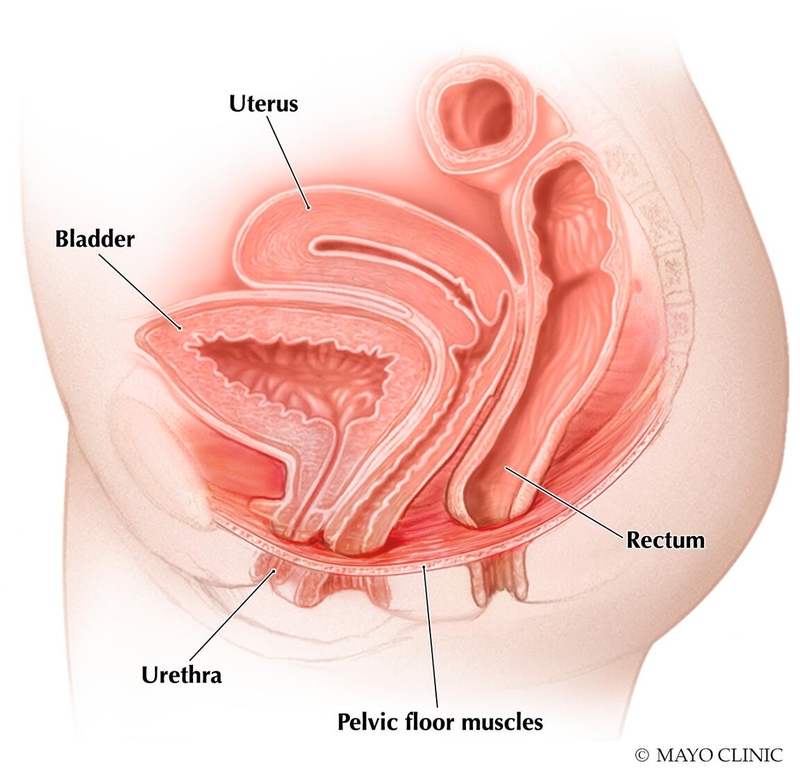
“Mayo Clinic Guide to a Healthy Pregnancy” by Myra J. Wick, M.D., Ph.D., includes information on a wide range of topics, all of which are equally important to know throughout the pregnancy journey. One of these topics, the pelvic floor, is discussed in the following excerpt. The book provides detailed insight from Mayo Clinic experts that can help deepen understanding of what the pelvic floor is, how it affects the body and how to keep it strong during pregnancy.
Your pelvic floor
If this is your first pregnancy, you might never have given your pelvic floor much thought. But pelvic floor muscles are important at all stages of life. Healthy pelvic floor muscles can improve sexual function and prevent bladder and bowel problems, such as leaking urine and prolapse.
During labor the pelvic floor needs to relax and lengthen to allow for a baby to pass through. This is expecting a lot out of a group of muscles! But your body goes through many changes during pregnancy to prepare for labor.
How your pelvic floor works
If you think of your pelvis as a bowl, the pelvic floor muscles make up the bottom of the bowl. These muscles surround and support the bladder, vagina and rectum. The pelvic floor muscles let you control the release of urine, stool and gas. When you contract them, they lift the internal organs of the pelvis and tighten the openings of the vagina, urethra and anus. Your pelvic floor works in these same ways during labor.
The pelvic floor muscles also help to stabilize the pelvic bones and support your spine.

How pregnancy changes your pelvic floor
Your pelvic floor muscles work harder than usual during pregnancy. This is because they are supporting the weight of your growing baby. They are also softened by pregnancy hormones.
In addition, your vagina becomes more relaxed. This causes more strain on your pelvic floor as your pregnancy progresses, which can result in a feeling of pelvic heaviness or pressure.
All together, the pressure of a growing baby combined with the relaxation of the pelvic structures and your body’s increased production of urine may cause urinary symptoms. These may include:
◗ A strong desire to urinate, called urgency.
◗ More frequent urination.
◗ Urinary leakage, called incontinence.
These symptoms are common during pregnancy. They may go away after you have your baby, but not always. Talk to your care team if you are very uncomfortable in your daily activities. Pelvic floor physical therapy may help.
Other common symptoms you may want to talk with your provider about include:
◗ Constipation and straining with bowel movements.
◗ Vaginal pain with intercourse that is not improved by changing positions or using lubricants.
◗ Burning with urination
◗ Fever with urinary symptoms.
◗ Seeing or feeling tissue bulging from the vagina.
◗ Any urinary symptoms that make daily activities uncomfortable.
◗ Low back, pubic or hip pain.
Pelvic floor exercises
Pelvic floor exercises help strengthen and tone your pelvic floor muscles and other tissues. A strong pelvic floor can make pregnancy more comfortable. And it reduces your chance of having problems such as leaking urine after giving birth and later in life.
While yoga can be an effective way to strengthen pelvic floor muscles, Kegel exercises are the easiest and most effective way to strengthen pelvic floor muscles. The best time to start strengthening your pelvic floor is right away.
How to do Kegel exercises
Identify your pelvic floor muscles — the muscles around your vagina and anus. When you finish urinating, stay sitting on the toilet. Imagine “closing” your vagina or that you are stopping gas from passing. You can also place a finger in your vagina and squeeze the vaginal muscles around it. When you contract your pelvic floor muscles in this way, you are doing a Kegel.
To make sure you’ve found the right muscles, you can try to stop the flow of urine while you’re going to the bathroom. Don’t make this a habit, though. Doing Kegel exercises while urinating or when your bladder is full can be confusing to your body and lead to problems with emptying your bladder.
Once you’ve identified your pelvic floor muscles, you can do Kegels in any position you choose. To get started:
◗ Perfect your technique. To do Kegels, imagine you are sitting on a marble and tighten your pelvic muscles as if you’re lifting the marble. Try it for 3 seconds at a time, then relax for a count of 3.
◗ Focus on relaxing your muscles between Kegels. Relaxing your pelvic floor muscles lets you empty your bladder and have a bowel movement. During labor and delivery, thinking about letting the vagina open or the pelvic floor drop can help you relax your pelvic floor. This may make delivery easier.
◗ Maintain your focus. For best results, focus on tightening only your pelvic floor muscles. Be careful not to flex the muscles in your abdomen, thighs or buttocks. Avoid holding your breath.
◗ Repeat three times a day. Aim for at least three sets of 10 to 15 repetitions a day.
Excerpted from “Mayo Clinic Guide to a Healthy Pregnancy” by Myra J. Wick, M.D., Ph.D.

Relevant reading
Beyond Breast Cancer
A supportive, practical guide to navigating life after breast cancer diagnosis and initial treatment.




















